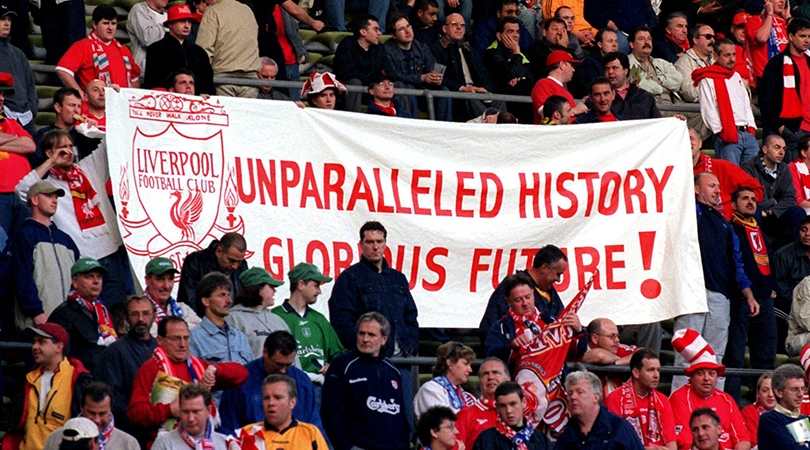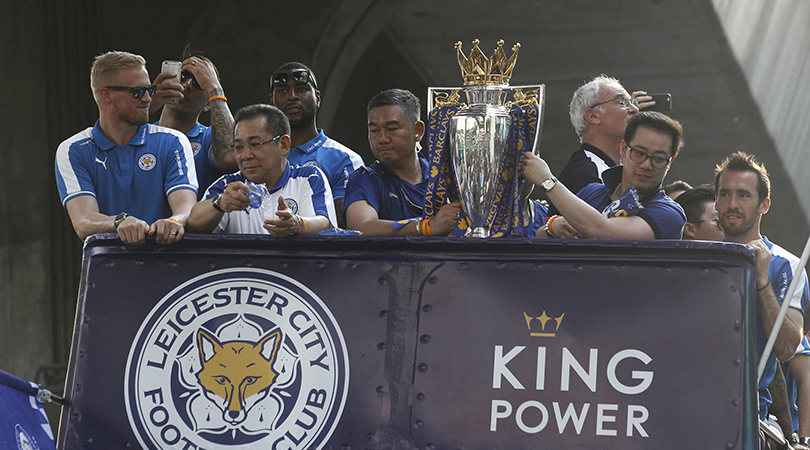Infographic: Is your club in its "rightful place"?
Are your lot batting above or below their average? Mike Holden has crunched the numbers for the definitive answer...

You can tell it’s August by the number of players, supporters and journalists using the phrase “rightful place” – usually when clubs are perceived to have spent time finishing somewhat below their hypothetical station
The only way to judge historical “rightfulness” is to check historical data. According to popular cultural reference tool the Bible, the human lifespan is “Three score and 10” – 70 years, in more modern terms.
It therefore seems a suitable yardstick for a comparative analysis of the current 92 English league clubs based on their aggregate finishing position in post-war times – 70 seasons in total. This FFT study is purely objective: teams are scored on their aggregate finishing position from 1-92 across those 70 seasons (any season spent in non-league or non-existence ranks as 100). The lower a club's aggregate score, the better.
But life moves on and time is unforgiving. What happened last season is more relevant than what happened 20 years ago and what happened 20 years ago is more relevant than what happened 20 years before that. Then again, sample sizes also matter – for example, one league title success doesn’t mean Leicester are suddenly bigger than Liverpool.

So it’s only right we weight performance in accordance with generational cycles. Therefore, the scores are weighted in descending 20-year cycles. So scores since 1997 have a value of 1.0, between 1977 and 1996 the value is doubled, between 1957 and 1976 the value is trebled and the first decade after World War II (1947-1956) is multiplied by four.
There’s plenty to see in the accompanying graphics dotted through the piece, including where your boys "should" be. Having studied the findings in detail, here’s what FFT considered to be the most salient points raised…
Money preserves the status quo
The best features, fun and footballing quizzes, straight to your inbox every week.
Last season’s Premier League narrative centred on an ‘unprecedented’ level of unpredictability, but the historical top seven – Man United, Arsenal, Liverpool, Tottenham, Everton, Chelsea and Man City – all finished in the top 11, the same as the season before.
Indeed, had Leicester and Chelsea not swapped scripts beforehand, the storyline would barely have been remarkable at all: just a slightly stronger Spurs than usual replacing a slightly under-par – but still top-five – Manchester United.
In the five seasons between August 2009 and May 2014, the top seven all finished in the top eight places every year, three times filling the top seven. Over the past decade, a historical top-seven club has only finished outside the top eight on six occasions (out of 70 possibilities).
Leicester: hardly minnows
Without wishing to detract from last season’s extraordinary Premier League success, the narrative went a little overboard in its illustration of Leicester as historical nobodies.
The honours list might be modest but the Foxes are certainly top-flight material over the EPL era; over the entire post-war period (see graphic below) they have been steady middleweights, spending 35 seasons in the top flight and all but one of the other 35 in the second tier. Their aggregate post-war finishing position is similar to Sunderland, one of the clubs most frequently described as being underachieving.
Indeed, had it not been for the intervention of a certain Brian Clough in the 1970s, Leicester would be head and shoulders above both of their East Midlands rivals. As it is, they currently share equal billing with Nottingham Forest, although events of the past 12 months put them in a strong position to kick on in the next 20-year cycle to leave their two nearest rivals trailing in their wake.
Wolves: the ultimate sleeping giant
They might have done very little of note for the past 35 years but an objective study like this, even when weighted in favour of recency, serves only to illustrate what a big club Wolves really are – and why their supporters tend to be more disgruntled by mediocrity than most.
After the war, the Black Country outfit spent 33 of the next 36 seasons competing in the top flight, winning three titles under Stan Cullis in the 1950s, and completing top-six finishes on 11 other occasions between 1947 and 1963. But not since 1980 have they hit their par ranking of tenth in the country.
With the club now owned by a Chinese conglomerate pledging to invest the sort of money which could catapult the Old Gold back into the big time, younger generations might wish to make a mental note of this track record before embarrassing themselves with the usual jibes about a lack of class or history...
Sheffield Wednesday: the forgotten club
Football fans of a certain age might be shocked to see Sheffield Wednesday residing outside the top 20, but it just goes to show how quickly time flies – the Owls have been absent from the Premier League for 16 years now.
Of the 23 clubs who have totted up three decades or more at the highest level since the war, only Wolves (19 seasons, 1983-2003) have experienced a longer top-flight exile. The Steel City club have also attracted foreign investment, though, and hopes are high that Carlos Carvalhal will be the man who finally put an end to the prolonged drought.
Geography matters
People have often speculated about what would happen if the two Sheffield clubs merged, as if the combined might of Wedensday and United would create a new superpower to rival the big clubs in Manchester, Merseyside or London. But such speculation might be missing the point.
Outside of the six biggest regions – the aforementioned three, West Midlands, North-East and East Midlands – only Leeds and Stoke (with respect to Port Vale) are stand-alone entities in the top overall 20. After that, you’ve got the Sheffield duo neck and neck, followed by Lancashire rivals Burnley, Bolton and Blackburn.
Clubs who share geographical hotbeds are generally positioned close to one another in the rankings, and usually higher than one-city clubs of similar size and potential. It stands to reason: even when league titles or promotions aren’t up for grabs, local pride drives them on to outdo their rivals.
Hampshire: the unhealthiest of rivalries
As if to hammer the point home, look no further than Southampton and Portsmouth, who really need to spend more time together. The two clubs (combined) have spent 60 seasons in the top flight and 59 seasons in the second tier, yet bizarrely they’ve only spent six seasons in the same division over the past 60 years.
They sit 23rd and 29th respectively in the historical chart and naturally ridicule each other by virtue of which team is competing at the higher level in any given era. Conversely, they would arguably both be comfortable top 20 clubs if they crossed paths more often.
